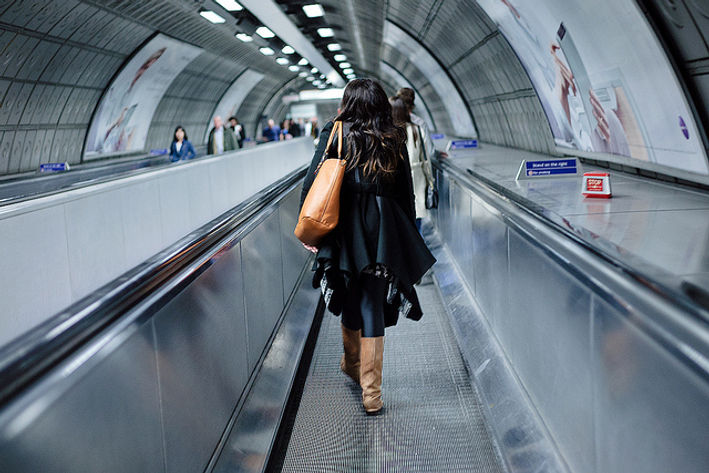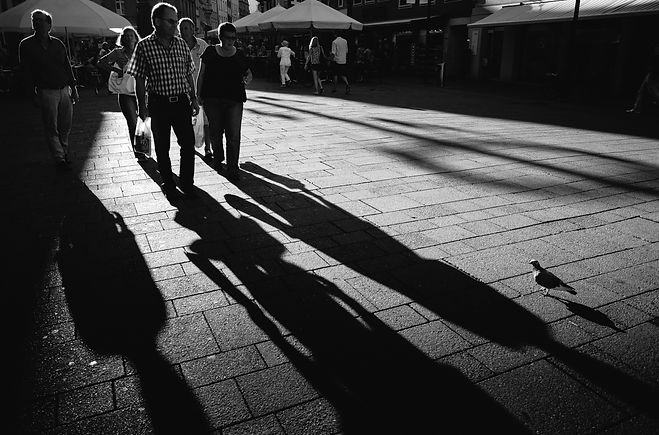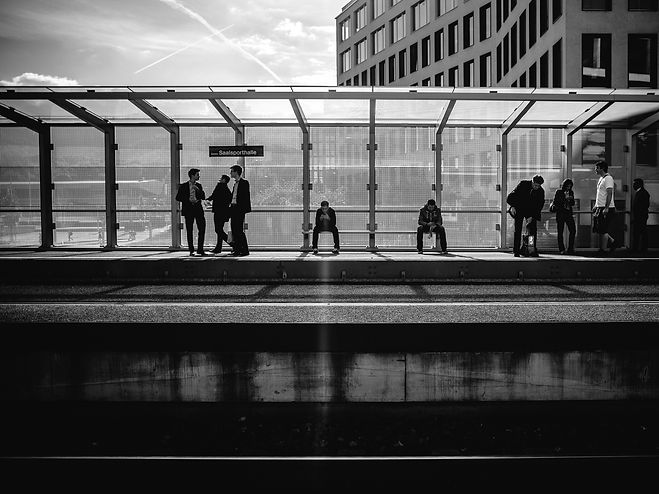LILIAN LE
Ines Njer's Photography:
Ines Jner's street photography also incorporates Henri Cartier-Bresson's ideas and concepts. As seen in: https://www.flickr.com/photos/inesnjers/page1, she has a particular interest in:
-
Capturing people in their natural state
-
Capturing subtle movement against still background
-
Bringing out stark contrasts between the light and dark through using a black and white filter
-
Using shadows to tell stories, or further emphaise the stark contrasts between the light and dark
-
Exploring depth of field through a variety of methods - not just through a tunnel. For example, through a staircase, escalator, shopping centre, cafe window
-
Using negative space to effectively bring out a sense of isolation, serenity, peace
-
Careful framing and composition to create balance and symmetry within the photograph
-
Using the urban landscape's geometric structure, shapes and patterns to create interest in the photograph - bringing a sense of urban life, order or chaos
-
Balancing any chaos or 'busy-ness' of geometric shapes and patterns with the movement of people - she uses these subtle contrasts to bring about harmnoy and balance
-
Molding her photograph around a bold and bright statement colour
-
Using colour to portray a theme or concept


Here is another example of Njer using the surroundings geometric structure and shapes to her advantage. This photograph in particular, relies on the surroundings structure and shapes to tell its story. Featuring a young lady who appears to be 'trapped' between a network of curves, lines movement and bustle, we can see Njer's careful precision with composition and framing. The lady sitting down is the only subject in a clear focus, with everyone around her blurred and in motion. This portrays a sense of loneliness and isolation, as she seems to be out of place and lost. Njer's careful position of the person's moving legs in the foreground, with the still subject further in the background, helps show and thus represnt the contrast between the two. The moblie individual seems to have a purpose, knowing where their destination and path lies - whereas the still subject appears lost and confused, unsure of what is to come.
Ines Jner likes to play with depth of field and perspective in her photographs. Like Cartier-Bresson, she uses the geometric structure and shapes of the surroundings to her advantage. Here, the circular structure of the tunnel is used to frame the photograph. She places the subject in the centre of its dome to give the image balance and symmetry. She then uses the contrast of the straight harsh edges of the escalator to the smooth curved tunnel roof to draw the audiences attention to its stark black railings. This vector is used to draw the audience's attention to the subject, and what is further beyond - giving the photograph a three dimensional look. Hence, making the audience believe that they are in the photograph, bring.
The whole image features a cool blue tone, with the subject's bag and shoes being saturated into a warm brown yellow. This bright colour contrast is strategically placed in the photographs centre, creating a sense of circular symmetry and balance.


In this photograph, Njer has used the stark contrasts of the shadows against the light to powerfully tell a story. The pigeon, positioned in the far corner of the frame, appears small and vulnerable to the large figures, with their enlarged shadows looming over the pigeon. The people are positioned near the top left of the photograph, allowing the 'blank' space between the two subjects to be filled up with their large elongated shadows. This, in comparision to the small pigeon, with it small shadow caste, portays humans' as powerful and fierce, over the pigeon, small and vulnerable. Its vulnerablity is especially emphasised through the harsh sunlight shining on its face. It appears bare and exposed.
This photograph is yet another example of her careful precision in composition and geometric structure and balance. She has used the rules of thirds to give the photograph a sense of balance and symmetry, with the stations strong structure placed in the central third of the photograph. The contrast of the dark people and metal frames, against the light shining through the station's glass, draws the viewers attention to this photographs geometric richness - with all its angles and shapes. Njer has captured multiple people with a similar stances to add repetition and rhythm to the photograph. Although some are similar, overall, all stances are quite diverse. This effectively represents that although humanity may do similar things, none of us are the same - we are all unique and different, and will be able to find like minded individuals.

This is one of my favourite photographs from Njer. (I know I'm not supposed to be saying 'I' but, I absolutely love it!!)
Ines Njer has captured the subject in his natural environment, with him being completely unaware of her presence. She has used the rule of thirds to bring balance and symmetry into the photograph. With the subject cast in the light with the rest of the background relatively simple and dark, all of the viewer's attention is drawn to him. His body stance is very natural and at ease. He appears to be deep in thought, his hands gently clasped on his thighs. The long bench that he is seated on is empty, its blank space portrays a sense of loneliness and solitude - further emphasised by the vacant street in the background.
He is full of stories, from his raised expression, to his worn out boots, to the tanglement of his beard... every crease, every fold, is a story.